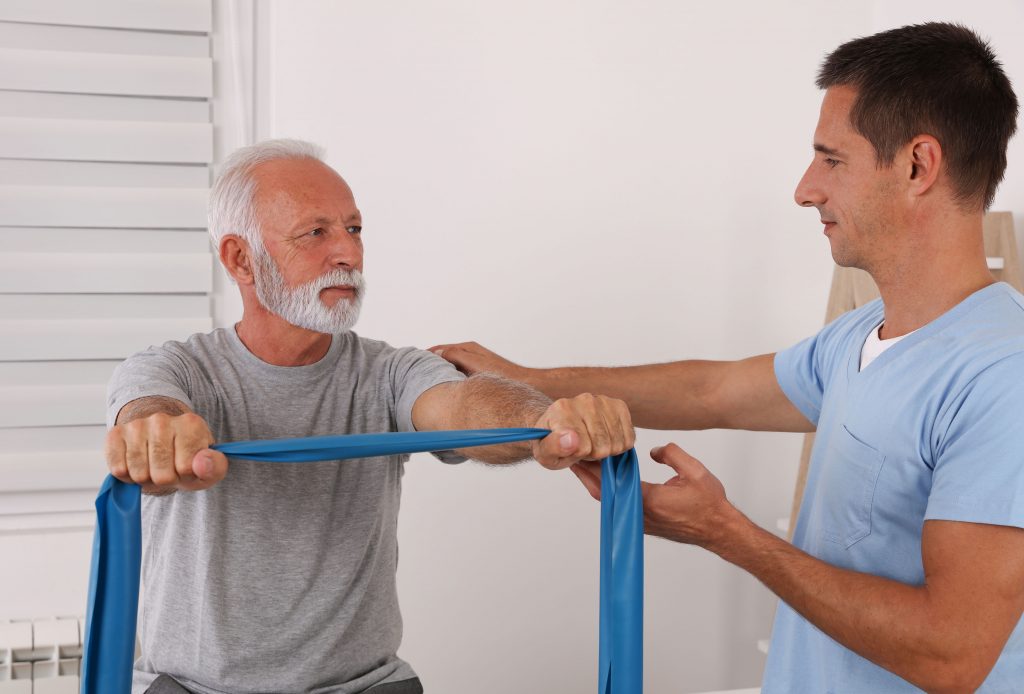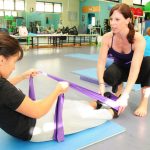
If you’ve ever been unfortunate enough to suffer with a sports-related injury that has kept you on the sidelines for several weeks/months, when the time comes for rehab it’s important to find a rehabilitation program that works for you.
Sports injuries can be incredibly painful, and often require surgery and an extensive rehab program before an individual is medically cleared to return to physical exercise.
As part of a rehab program, more and more people are incorporating resistance bands into their recovery. The benefits are there for all to see.
A few common sports injuries in particular, that could benefit from resistance bands include:
- Runner’s knee
- Tennis elbow
- Dislocated shoulder
- Shoulder pain
- ACL recovery
- Strains and sprains
- Hip bursitis
- And many more…
Here’s a better look at sports injury rehab with resistance bands.
What are resistance bands?
Resistance bands are often used as part of people’s training regimes and rehabilitation programs.
In terms of appearance, resistance bands are very basic as they are basically long elasticated rubber bands. Often there is a handle on either end, and they come in various lengths and thicknesses, depending on the level of resistance you want.
The thicker the band, the more resistance it will apply, and vice versa.
You can determine the resistance of a band based upon its colour, as different resistances come in different colours.
Basically, the band induces muscle contraction and mimics the effects achieved by resistance training using weights and machines.
Different stages of sports injury rehabilitation
Before we can look at the benefits of resistance bands on sports injury rehab, we first need to look at the 3 different stages of sports injury rehab.
These include:
Acute/early stage – This first stage of the recovery process typically involves very gentle and light exercise designed to help heal damaged muscle tissue.
Second stage – The next stage involves physical therapy which consists of exercises which will typically utilize resistance bands. The idea here is that the bands will add gradual loads to the injured muscle tissue, bones, joints, or ligaments, in order to help strengthen the target area for more strenuous exercise.
Functional/late stage – This final stage will really stress your tissues via a series of functional exercises, allowing it to adapt to prepare itself for when the individual returns to regular bouts of physical activity and exertion.
Tips for using resistance bands after a sports injury
Have you suffered a sports injury and are now rehabbing said injury like mentioned in the second stage? Here’s a look at a few tips for using resistance bands after a sports injury.
Keep movements slow – The first thing to remember when using resistance bands for sports injury rehab, is to keep movements slow and methodical and not to rush.
The goal here is perfect form and range of motion in a slow and controlled manner.
Keep the pace slow – Much like we mentioned earlier, as well as the movements being slow and methodical, so too should the pace of the rehab session/workout.
Remember, you aren’t competing here, and you aren’t training to burn fat, you are training to recover and repair your body.
Gradually increase resistance – Finally, after a while of using resistance bands, you’ll likely find that the exercises feel easier as you get stronger.
Once things do begin to feel easier, then you can think about increasing the resistance and going with larger and thicker bands.







